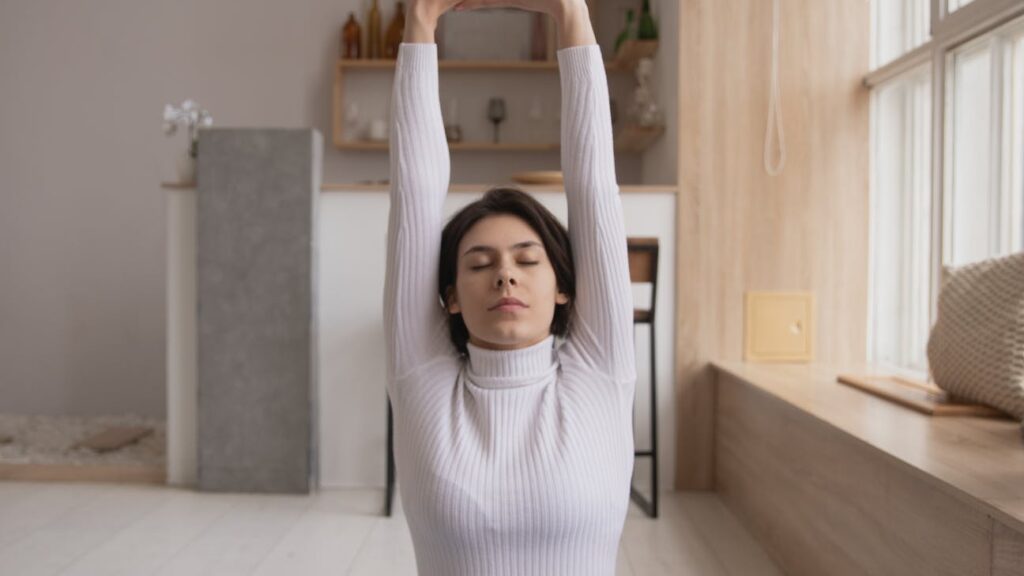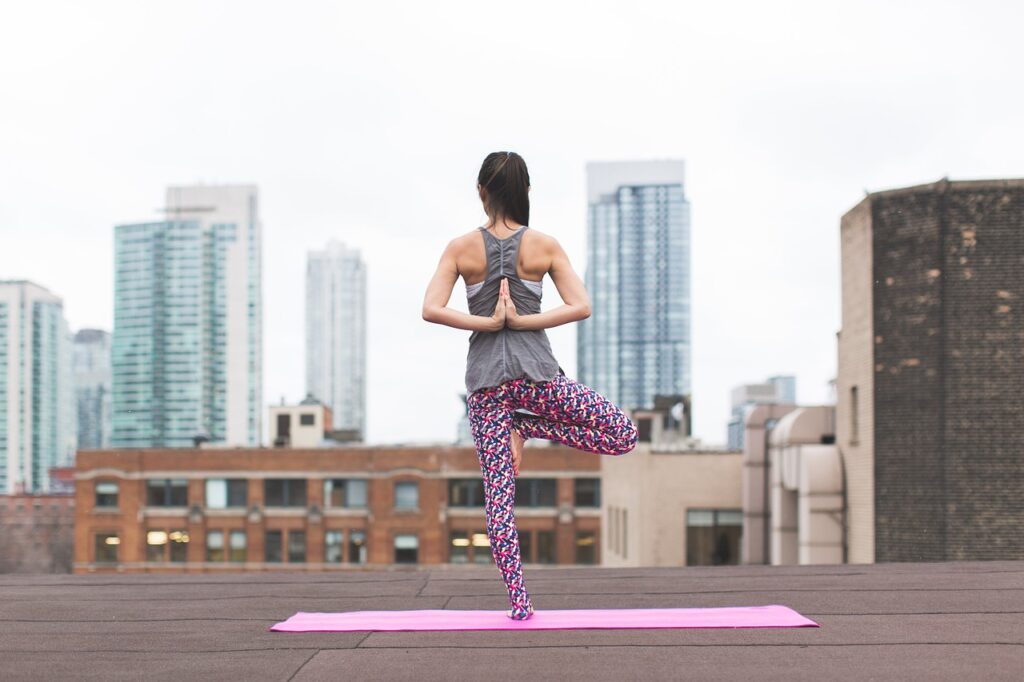
If you’ve ever suffered from migraines, you know how debilitating they can be. The throbbing pain, nausea, sensitivity to light and sound, and other symptoms can leave you feeling completely incapacitated. While there are many treatments available for migraines, one approach that has gained popularity in recent years is yoga.
What does the research say?
While yoga has gained popularity as a complementary therapy for migraines, what does the research say about its effectiveness?
A small but growing body of research suggests that yoga can be an effective complementary therapy for managing migraines. For example:
- A 2014 study (1
PubMed Central
Highly respected database from the National Institutes of Health
Go to source ) published in the International Journal of Yoga found that practicing yoga for eight weeks reduced the frequency, duration, and intensity of migraines in adults. - A 2016 study published in the European Journal of Integrative Medicine found that practicing yoga for 12 weeks reduced headache frequency and intensity in adults with chronic migraines.
- A 2017 study published in the Journal of Traditional and Complementary Medicine found that practicing yoga for 12 weeks improved headache frequency, intensity, and duration in adults with migraines.
- A 2018 study published in the Journal of Headache and Pain found that practicing yoga for eight weeks reduced the frequency and severity of migraines in adults.
While these studies suggest that yoga can be an effective complementary therapy for managing migraines, more research is needed to fully understand its effectiveness and the best types of yoga practices for migraine management.
What poses can you try?
If you’re interested in using yoga as a complementary therapy for migraines, here are some poses you can try:
- Child’s Pose: This gentle forward fold is a great way to release tension in your neck and shoulders. Begin on your hands and knees, then lower your hips back towards your heels and stretch your arms forward. Rest your forehead on the mat and breathe deeply for several breaths.
- Downward-Facing Dog: This pose can help relieve tension in your neck and shoulders and increase blood flow to your head. Begin on your hands and knees, then lift your hips up and back. Keep your knees bent if needed and relax your head and neck.
- Seated Forward Fold: This pose can help relieve tension in your neck and shoulders and improve blood flow to your head. Sit on the floor with your legs extended in front of you, then fold forward from your hips and reach for your feet or ankles. Relax your head and neck and breathe deeply.
- Cat-Cow: This gentle flow can help relieve tension in your neck and spine. Begin on your hands and knees, then inhale and arch your back as you look up. Exhale and round your spine as you look towards your belly button.
- Legs Up the Wall: This restorative pose can help reduce stress and promote relaxation. Sit with one hip next to a wall, then lie down on your back and swing your legs up the wall. Relax your arms by your sides and breathe deeply for several minutes.
Outlook
If you suffer from migraines, incorporating yoga into your management plan may be a beneficial complementary therapy. While more research is needed to fully understand the effectiveness of yoga for migraines, the existing studies suggest that it can be helpful in reducing the frequency, duration, and intensity of migraines.
By reducing stress, increasing blood flow, improving posture, promoting mindfulness, and enhancing sleep quality, yoga can help relieve tension and promote relaxation, which are common triggers for migraines. Additionally, practicing yoga can help you better manage your migraine symptoms and improve your overall well-being.
It’s important to remember that yoga is not a substitute for medical treatment for migraines. It’s essential to speak with your healthcare provider about incorporating yoga into your migraine management plan and work with an experienced yoga teacher who can guide you through the practice safely and effectively.
Other ways to prevent a migraine
In addition to incorporating yoga into your migraine management plan, there are other lifestyle changes and strategies that can help prevent migraines. Here are some other ways to prevent migraines:
- Identify Triggers: Keep track of your migraines and identify any triggers, such as stress, certain foods, or lack of sleep. Once you identify your triggers, you can take steps to avoid or manage them.
- Maintain a Healthy Lifestyle: Eating a healthy diet, getting regular exercise, and getting enough sleep can help prevent migraines.
- Manage Stress: Stress is a common trigger for migraines, so finding ways to manage stress is essential. Try relaxation techniques such as yoga, meditation, deep breathing, or massage.
- Stay Hydrated: Dehydration can trigger migraines, so it’s important to drink plenty of water and stay hydrated throughout the day.
- Avoid Overuse of Medications: Overusing medications such as pain relievers and migraine medications can lead to rebound headaches and make migraines worse. Talk to your healthcare provider about the best way to manage your migraines with medication.
- Consider Acupuncture: Acupuncture is an alternative therapy that may be helpful in preventing migraines. Talk to your healthcare provider about whether acupuncture may be right for you.
By incorporating these strategies into your lifestyle, you can help prevent migraines and improve your overall well-being. Remember to speak with your healthcare provider about the best ways to prevent and manage your migraines, and work with them to develop a personalized treatment plan that’s right for you.




